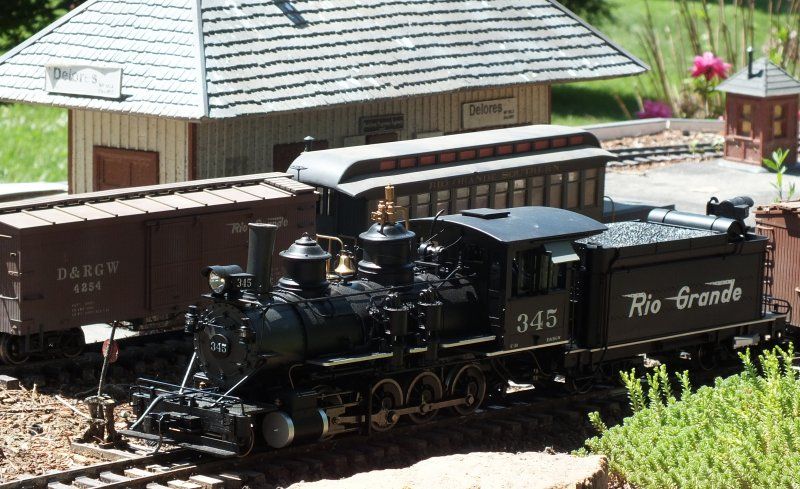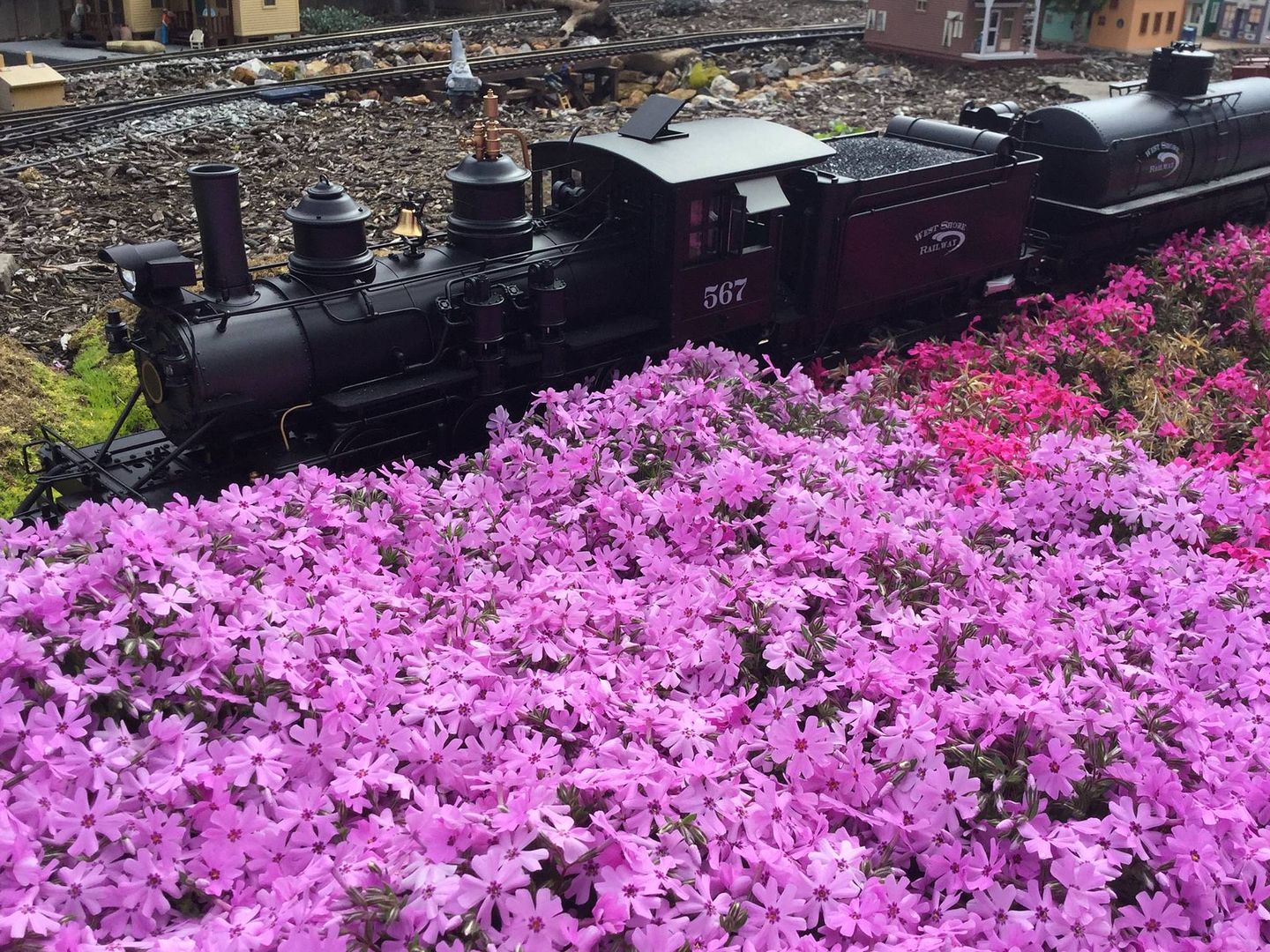Finally got my battery and now have a working C-19 to take some of the load off my K-36. This little C-19 is amazing and so silky smooth its hard to believe its Bachmann. It pull’s far better then I figured it would and will handle anything I need on my railroad. Sound will come later but for now I’m happy to have a second operating locomotive on the railroad. I got #346 and I plan on adding a few details but it will stay un-weathered.
I’ve got #345 and it’s become the work horse here:

We like ours, just need more time to run it!


I’m surprised for the time this loco’s been available, that it’s not seen on more railroads. If I were building a new railroad from the start, I could definitely see building a roster with a fleet of these. Very smooth, reliable, with plenty of pulling power.
Later,
K
Most road names are getting hard to find now, this was Gold Coasts last 346 but they still has a nice supply of Bumble Bee’s. If you check online that also seems to be the case, very low stock with a few Bee’s
My goal is to get a C19 eventually so really appreciate your posts very encouraging. I run an Annie, Climax, and Connie and have been very satisfied with these engines on my layout, all great runners and no problems with any of my Bachman locos. They all look amazing and very realistic so the C19 sounds like it should be my next goal.
I know nothing about this loco but is it just my eyes that the front and rear drivers look just a hair bigger than the middle two?
" Rooster " said:
I know nothing about this loco but is it just my eyes that the front and rear drivers look just a hair bigger than the middle two?
It’s because there are no flanges on the middle two so it can work on smaller radius curves.
OK …seeing it and understanding!
Thanks!
The two C-19’s at Knotts’ Berry Farm also have blind center drivers
This is the case on most narrow gauge 2-8-0s Baldwin (and others) produced. In most cases, the center two drivers also have slightly wider tires than the flanged drivers, to help the wheels stay on the railhead on tight curves. (I want to say 6.5" vs 5.5", but don’t quote me.) Here’s one of the East Broad Top’s mikados on a curve, showing why that’s important:

The center drivers on Bachmann’s model are prototypically wider than the end drivers–one of only two locomotives I’ve seen which accurately model the prototype. (The 2nd would be Rich Yoder’s EBT mikado.)
Later,
K
Is the wheel actually thicker, or does it just appear thicker since it doesn’t have a flange?
The blind center drivers on the C-19 model and prototype are slightly wider then the flanged drivers which helps on tight curves.
On some of the prototype C-19 the center drivers have a 1/2 flange on the center drivers but most are blind. I seem to remember that one of the Knotts locomotive has 1/2 flanges in its center drivers.
On the Bachmann C-19 the blind drivers are held up to rail height so that on tight curves the drivers do not drop off the rails. These can be removed by removing the bottom plate and filing them off. The result is a slight improvement in pulling power, the downside is that the locomotive will no longer go around less the 8 ft curves
Some larger standard gauge locomotives also have blind drivers. These can no longer operate on the main lines due to some turnouts that have raised guardrails.
Stan
Blind drivers.


Stan Ames said:
The blind center drivers on the C-19 model and prototype are slightly wider then the flanged drivers which helps on tight curves.
. . . .
On the Bachmann C-19 the blind drivers are held up to rail height so that on tight curves the drivers do not drop off the rails. These can be removed by removing the bottom plate and filing them off. The result is a slight improvement in pulling power, the downside is that the locomotive will no longer go around less the 8 ft curves
Stan - is that 8 ft radius or 8 ft diameter ? I assume it is radius, as my EBT Mikado (Accucraft) wil handle 5’ radius curves - and it doesn’t have the wider tires.
Some larger standard gauge locomotives also have blind drivers. These can no longer operate on the main lines due to some turnouts that have raised guardrails.
Stan
But they operate on the yard tracks. Take a look at the front drivers on “Wanderer” at the B&O museum (pic attached.) They have wide, blind tires - the front truck keeps the loco on the track. [B&O had some tight curves! They have a 4-6-0 in the museum with only ONE set of flanged drivers at the back.]
Last time I saw it operate, it was running through switches with those raised guard/checkrails, and the front axle was violently pushed to one side as it hit the frog. I did ask Chris, the driver (he used to post around here,) whether it was a good idea.
I remember a day at Knotts back in the 90’s then the crew brought 340 into the station then locked the wheels and she slid for about 10 feet. I could clearly see someone getting a butt chewing soon after.
Pete Thornton said:
Stan Ames said:
The blind center drivers on the C-19 model and prototype are slightly wider then the flanged drivers which helps on tight curves.
. . . .
On the Bachmann C-19 the blind drivers are held up to rail height so that on tight curves the drivers do not drop off the rails. These can be removed by removing the bottom plate and filing them off. The result is a slight improvement in pulling power, the downside is that the locomotive will no longer go around less the 8 ft curves
Stan - is that 8 ft radius or 8 ft diameter ? I assume it is radius, as my EBT Mikado (Accucraft) wil handle 5’ radius curves - and it doesn’t have the wider tires.
8 ft diameter or R3. I use Aristocraft wide radius turnouts in my yards (10 ft diameter) and the locomotive runs fine with the blind drivers fully sprung.
Stan